Galaxy S8 vs S8+: Which is the better Galaxy?
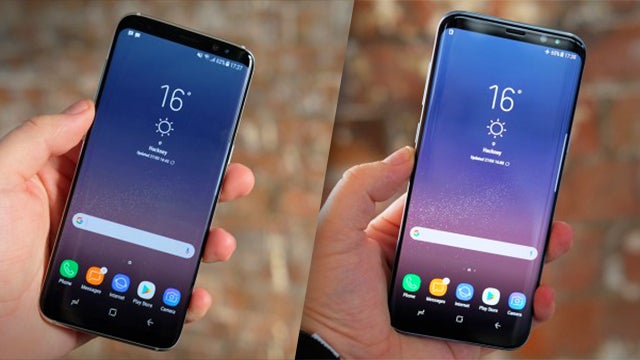
Galaxy S8 vs S8+: The Galaxy S8 and Galaxy S8+ have finally arrived, and they might just be the finest phones available. But what’s the difference? Is it just that one’s bigger? We take a look.
It’s finally here. After months of rumours and speculation, the Galaxy S8 has arrived, and it’s pretty much exactly what we were expecting. Which isn’t really a bad thing – the S8 is a design triumph, with its barely there bezels and super-large display.
And while we’re very taken with Samsung’s latest, we know many will be wondering what the difference is between the S8 and S8+. Is it simply down to the dimensions, or does the “+” denote a greater number of upgrades?
Read on for all the answers, or scroll down to the bottom of this page for a shorter summary.
Related: Amazon Prime Day 2019
Galaxy S8 vs S8+ Design – What’s the difference?
First up, let’s deal with the obvious. This year, the ‘Edge’ model has been replaced by the ‘+’ offering. Why? Well, because this year, Samsung’s decided to stick curved edges on both phones, making the ‘Edge’ label redundant. Thus, the S8+ is the replacement for the former S7 Edge.
That means, this year, there’s even less difference between the two models than before. Both come with curved-edge screens which Samsung has dubbed ‘Infinity Display’ – owing to the increased screen size. And that enlarged display area comes as a result of the company ditching the home button in favour of smaller bezels and an edge-to-edge screen on both handsets.
To make space, the fingerprint sensor has moved to the back and stuck next to the camera. That’s not the most ideal placement, but you should get used to it after a while.
Related: Best Android phones
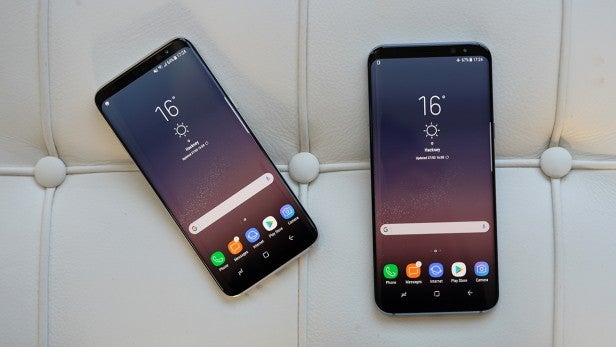 The S8 and S8+
The S8 and S8+
In addition to the fingerprint scanner, the iris scanner from the Galaxy Note series has finally made its way onto the Galaxy S range, in an upgraded form. You’ll find it on that ever so slight bezel at the top of the two phones, alongside the front-facing camera.
So, is there any actual difference between the S8 and S8+ in terms of design? Well, the only major one is the dimensions. The standard model comes in at 140.1 x 72.2 x 7.3mm, while the Plus model measures 152.4 x 78.5 x 7.9mm.
The normal Galaxy S8 has a 5.8-inch display, while the S8+ gets a huge 6.2-inch screen. Both phones have the same 1440 x 2960 resolution Super AMOLED panel, and they look fantastic.
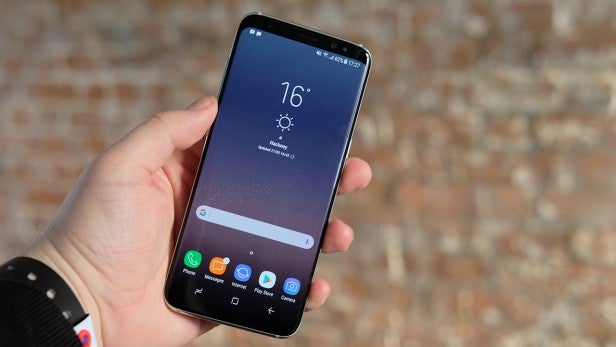 The S8+
The S8+
Thanks to Samsung’s usage of Super AMOLED tech once again this year, the pixels will look incredibly vibrant, while blacks will be deep and inky, thanks to the screen’s ability to simply turn off individual pixels. There’s also energy efficiency advantages that come with OLED panels, so both phones shouldn’t disappoint in the display stakes – especially with the Mobile HDR Premium feature that lets you watch HDR content.
Other than that, the phones are identical, design-wise. Both come in either dark black, bright silver, or a grey with a blueish tinge and feature the same, sleek chassis and glass panels. In other words, both phones look bloody good, and seem to mark a turning point in smartphone design, after years of handsets looking far too similar to each other.
Related: Galaxy S7 review
Galaxy S8 vs S8+ Specs: Which phone is the most powerful?
So, what about the hardware then? Any big differences here? Well, actually, no. But that’s not a bad thing. The main thing to be aware of here is that these may be the fastest phones available right now. Both the S8 and S8+ are flagship devices, and pack in the latest hardware and software. They will almost certainly provide the smoothest performance you can buy, at least for now.
First of all, the S8 and S8+ will have different processors depending on which country you’re in. Those in the USA will be getting Qualcomm’s latest Snapdragon 835 chip, which comes with a load of new technology such as 25% better energy efficiency over the Snapdragon 820, Bluetooth 5 support, better graphics, and of course a more powerful octa-core CPU.
Related: Galaxy S8 vs Galaxy S7
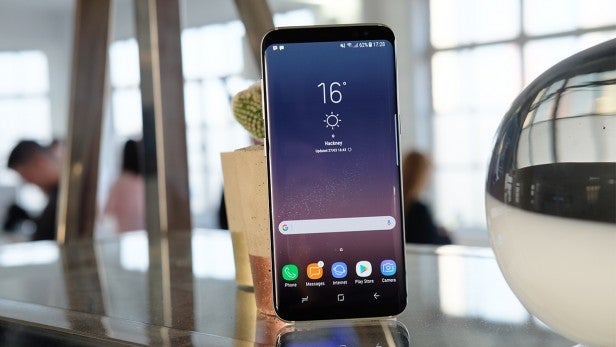 The S8
The S8
If you’re in the UK, other parts of Europe, and Asia however, the S8 and S8+ come with Samsung’s own Exynos 8895 chipset. But don’t worry – both Qualcomm and Sammy’s chips offer the latest innovations and are built using the new 10nm process, so you’re not going to see a massive difference in performance between models from different regions. And, there certainly won’t be any difference in performance between the Galaxy S8 and S8+.
Backing up that processor in both handsets is 4GB of RAM, which should provide more than enough memory power to keep the user experience fluid and glitch-free. There’s also 64GB of internal storage, which is a decent amount considering it took Apple until last year to ditch its positively abject 16GB memory tier. There’s also a Micro SD card slot for those looking to expand the internal storage up to 256GB.
The only major difference to note between the S8 and S8+ is the battery size. On the Galaxy S8 has a 3000mAh battery, while the Galaxy S8+ comes with a 3500mAh cell. With a bigger display on the latter, that extra battery power will be needed, and in the aggregate, it will likely mean both phones offer similar battery life. We are slightly concerned the S8 won’t go a day with that bigger screen sucking up the charge, but we’ll have more once we’ve fully reviewed the phone.
Related: Best Samsung S8 Plus Deals
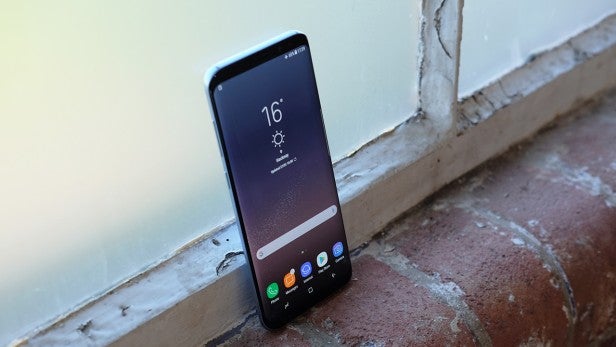 The S8+
The S8+
You’ll find a 12-megapixel camera on the back of both models. That’s the same megapixel count as last year, along with an f/1.7 aperture and optical image stabilisation (OIS). Not much has changed since last year, but seeing as the Galaxy S7 had the best smartphone camera available, we’re not too bothered.
An upgrade would have been nice, but as it stands, the camera on the S8 will take some of the best photos of any smartphone. Samsung has added a new feature that means the phone takes three pictures every time you hit the shutter, which it says reduces blur and makes for better shots. Beyond that, it seems not much has changed.
Round the front, both the S8 and S8+ come with an 8-megapixel shooter with an f/1.7 aperture and autofocus. It’s a decent enough offering that should provide some decent selfie-performance.
Overall, then, there’s little difference between the two phones in terms of hardware. A bigger size, bigger screen, and bigger battery on the S8+ is the long and short of it. It’s also worth being aware that both phones come with full IP68 waterproofing, along with a USB Type-C port and wireless charging. Sammy’s thought of everything this year!
Related: Galaxy S8 vs Google Pixel
For a full spec comparison, check out the table below:
| Galaxy S8 | Galaxy S8 Plus | |
|---|---|---|
| Screen | 5.8 inches | 6.2 inches |
| Display Resolution | 1440 x 2960 pixels | 1440 x 2960 pixels |
| Screen-to-body Ratio | 84.4% | 88.6% |
| Aspect Ratio | 18.5:9 Infinity Display | 18.5:9 Infinity Display |
| Dimensions | 148.9 x 68.1 x 8.0mm | 159.5 x 73.4 x 8.1mm |
| Chipset | Qualcomm Snapdragon 835/Exynos 8895 | Qualcomm Snapdragon 835/Exynos 8895 |
| RAM | 4GB | 4GB |
| Storage | 64GB – expandable | 64GB – expandable |
| Rear Camera | 12-megapixel OIS, f/1.7 | 12-megapixel OIS, f/1.7 |
| Front Camera | 8-megapixel, f/1.7 auto focus | 8-megapixel, f/1.7 auto focus` |
| Battery Size | 3000mAh | 3500mAh |
| Charging | Fast battery charging, Wireless | Fast battery charging, Wireless |
| Headphone Jack | Yes | Yes |
| Waterproof | Yes (IP68 Certified) | Yes (IP68 Certified) |
| Connectivity | Wi-Fi, 4G/LTE, USB-C | Wi-Fi, 4G/LTE, USB-C |
| Colours | Midnight, Grey and silver | Midnight, Grey and silver |
Related: Best Android apps
Galaxy S8 vs S8+ OS: Which phone has better software?
You’ll find Google’s latest mobile OS on both the S8 and S8+: Android 7.0 Nougat. It’s a great entry in the Android series that keeps everything good about the operating system and adds a load of new features to improve overall functionality. You’ll find richer drop-down menus, enhanced gaming support with the addition of Vulkan, and multi-window multi-tasking. There’s also a new Doze function for conserving battery power, and revised notifications that offer more options to interact with apps from the notification menu.
For a full breakdown of features, check out our comprehensive Android 7.0 Nougat review.
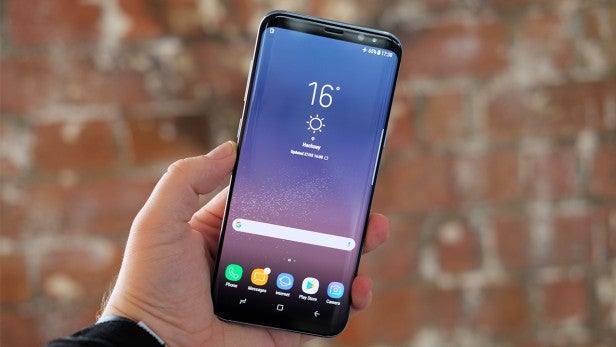 The S8+
The S8+
In all, it’s a great OS that should run at lightning speed on the S8 and S8+’s top-end hardware. But there is, of course the matter of TouchWiz. That’s Samsung’s proprietary Android skin that it likes to plaster over the stock OS. Last year the company managed to streamline the whole thing a bit more, so it wasn’t so intrusive.
We actually found the user experience to be an all-round pretty good one. This year, we’re yet to try out Samsung’s latest attempt at an Android skin, but we’re hoping it picks up where it left off last year and gets rid of unwanted apps and superfluous extra features.
It’s worth noting the larger S8+ might be slightly better if you like having apps side-by-side at the same time, but the experience is otherwise identical.
There is one more software element that’s worth being aware of here. Bixby is Samsung’s own AI assistant, and it makes its debut on the Galaxy S8 and S8+. Sammy looks to be taking on Google with its Google Assistant and Amazon’s Alexa with this latest software project, and it looks like the company has a lot to offer.
Samsung says Bixby will arrive in Europe later this year, while the US and Korea will get support from launch. It looks like an exciting addition to the software that offers help throughout the various apps. There’s also a new feature that lets you use the phones’ cameras to scan items and search online for the best price.
There’s also the new DeX docking station which is basically Samsung’s attempt to mimic Microsoft’s Continuum feature. But this attempt actually works. The S8 and S8+ plug into an HDMI monitor via the dock for a desktop-like experience. It’s a useful feature that lets you turn your phone into a portable desktop computer – though, just who will take full advantage of such a thing remains unclear.
Galaxy S8 vs S8+ Price: Which phone is better value for money?
The Galaxy S8 will go on sale for £689 on April 28 while the S8+ will arrive on the same date for £779. Considering the S8+ simply offers a bigger screen, we’re not sure the extra cost is really worth it.
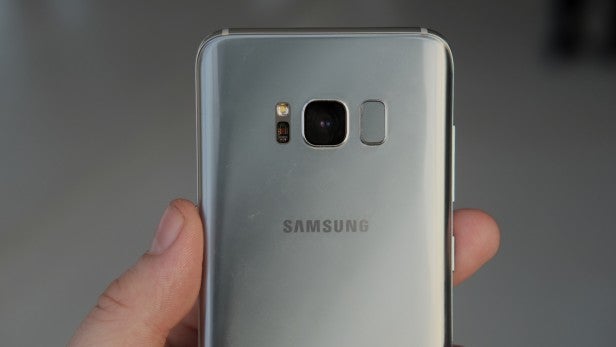 The S8
The S8
But, if you do like a bigger screen, there’s less than £100 difference between the two phones. We’d still go with the more refined standard model, but it’s not a whole lot more to pay for a larger screen if you desperately need one.
Buy Now: Samsung Galaxy S8 (20GB ) at Buymobiles.net for £38/month, £44.99 upfront
Buy Now: Samsung Galaxy S8 Plus (30GB) at Buymobiles.net for £41/month, £20 upfront
Galaxy S8 vs S8+ Summary: What’s the difference?
Here’s a brief overview of the key differences between the Galaxy S8 and Galaxy S8 Plus.
Design: These phones are basically identical in terms of their appearance. The only difference is the size. The S8 measures 140.1 x 72.2 x 7.3mm, while the Plus model measures 152.4 x 78.5 x 7.9mm. You’re essentially getting a bigger screen with the S8+, but other than that, the phones share a sleek and modern design.
Specs: Same processor, same RAM, same storage options. The only difference here is the battery, which is larger on the S8+ to accomodate that increased screen size. Other than that, the camera is the same, the ports are the same, and both the S8 and S8+ come with IP68 waterproofing.
Price: The S8 will cost £689, while the S8+ will set you back £779
Value: These are two expensive phones. You definitely get the best hardware for your money, but whether you want to spend around £700 on a phone will depend on how much you intend to use it and what you want to use it for.
We’ll have more once we’ve reviewed both phones.
Which phone would you rather have? Let us know in the comments.

